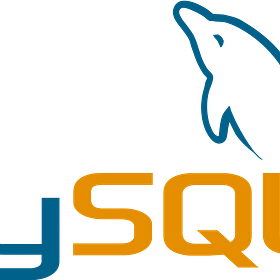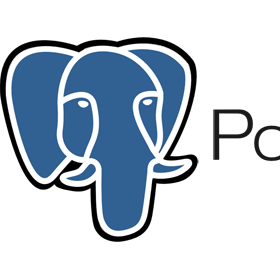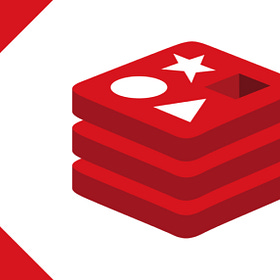Modern Database Options
Exploring the Latest Technologies for Data Storage and Management
A database is nothing more than a special program created explicitly around the functionality of data storage and retrieval with speed, performance and atomicity as primary design and user experience objectives.
Think of modern databases as unique flavors - all attempting to satisfy the definition of a database (above) through its own philosophy and design decisions bassed on which of those objectives are most important.
The most prevalent and adopted databses are relational databases, which store data in tabular form (conceptually) using tables, columns and rows.
With the explosion of the computer age, and the wide adoption of object oriented programming, NoSQL (not-only SQL) databases also emerged and have been widely adopted. These systems store data slightly different, more oriented in design around the concept of objects, keys and values.
Memory databases are often close cousins of NoSQL database systems, often designed using key-value data stores, sometimes alongside additional functionality to make the storage and retrieval efficient and easy. These are primarily use for creating caches, which are just mini databases that retrieve data much quicker than larger databases, given how fast a query can return from a given command/question.
I’ve written a set of tutorials/guides that go into the modern database systems used today along these different categories, and this post simply serves as a very quick summary of all the different systems, what they each offer in design and featurs, how they compare to one-another, and references to the posts that each go deeper into each one.
Databases Covered
Relational Database
MySQL
PostgreSQL
SQLite
NoSQL Databases
Firestore
Supabase
Cassandra
Memory Databases
Redis
Memcached
Graph Databases
Neo4j
MySQL
About
MySQL is an open-source relational database management system (RDBMS)
Currently owned and managed by Oracle Corporation
There is a free, open-source Community version and an Enterprise version with Oracle support
Widely used for web apps and supports various operating systems
Architecture
Follows a client-server architecture
Multiple clients can connect to the MySQL server over a network
Uses a modular design
A separate storage engine for managing data
Allows flexibility in configuration and optimization
Transactions are handled using the InnoDB storage engine
Ensures ACID compliance and data integrity
Supports replication setups for high availability and read scalability
Features
Storage Engines
Supports multiple storage engines like InnoDB, MyISAM, and Memory
Each engine is optimized for different types of workloads
Security
Provides robust security features
Includes user access controls, encryption, and SSL support for secure connections
Scalability
Allows horizontal scaling through master-slave replication
Allows for clustering, with solutions like MySQL Cluster
Performance Optimization
Offers tools for query optimization, indexing, and caching to enhance performance
Pros and Cons
Pros
High performance
Scalability
Strong community support
Cons
Limited support for advanced features (compared to some other databases)
Requires additional tuning for large-scale deployments
Best For
Best for web applications, content management systems (CMS), and data-driven platforms
Best for fast read and write operations
Best for flexibility in storage engines, and reliable transaction support
Learn MySQL - Top and Common Commands to Get Started
Contents About MySQL Set Up Application Access User Management Basic Operations Data Operations Maintenance
PostgreSQL
About
PostgreSQL is an advanced open-source relational database
Known for its extensibility, SQL compliance, and support for complex queries and data types
Architecture
Uses a multi-process architecture
Each connection runs in a separate process
Connections are managed by a master process (postmaster)
It implements MVCC (Multi-Version Concurrency Control) to manage concurrent access to data
This allows high throughput while maintaining concurrency
Storage management is handled through tablespaces
Allows users to control where PostgreSQL stores data files
PostgreSQL supports extensions
Enables users to add new features and capabilities without modifying core database code
Features
Extensibility
Supports custom data types, functions, and indexing methods, enabling developers to tailor database behavior to specific needs.
Advanced Data Types
Includes support for JSONB (binary JSON), XML, and arrays, suitable for handling semi-structured and complex data.
Concurrency Control
MVCC ensures consistent transaction handling and prevents locking conflicts, improving database performance in high-load environments.
Full-Text Search
Provides robust full-text search capabilities with support for indexes and advanced search queries.
Pros and Cons
Pros
Extensibility
SQL compliance
Strong support for complex queries and data types
Cons
Requires more resources compared to simpler databases like MySQL
Steep learning curve for beginners
Best For
Ideal for applications requiring advanced features, complex queries, and support for semi-structured data
Suits analytical processing, geographic information systems (GIS), and applications needing flexible data modeling and scalability
Learn Postgres - Top and Common Commands to Get Started
Contents About Postgres Set Up Application Access User Management Basic Operations Data Operations Maintenance Advanced Security Monitoring and Performance
SQLite
About
A self-contained, serverless, zero-configuration, transactional SQL database engine
Known for its simplicity and small footprint
Stores all database data in individual files (one per database)
Widely used in embedded systems and applications that need an integrated database solution
Architecture
Operates as a file-based database
An entire database is stored in a single cross-platform file
Implements a small, lightweight C library
Directly accesses the database file
This reduces overhead and simplifies the deployment
Transactions in SQLite are managed using the ACID properties
Provides reliability and data integrity
The database engine does not require a separate server process
This makes it suitable for standalone or embedded applications
Features
Zero Configuration
Requires no setup or administration
Easy to integrate into existing apps
Cross-Platform
Works seamlessly across different operating systems and platforms
Transactional
Supports full ACID transactions for reliable data handling
Extensible
Allows users to add custom functions and modules to extend SQL capabilities
Pros and Cons
Pros
Lightweight
Serverless
Easy to use
Easy to integrate into new or existing apps
Cons
Limited concurrency in high-traffic scenarios
Less suited for client-server applications requiring concurrent access
Best For
Ideal for embedded systems, mobile apps, and scenarios where simplicity, small footprint, and easy integration are priorities
Suitable for apps needing local data storage and offline capabilities
Learn SQLite - Top and Common Commands to Get Started
Contents About X Set Up Application Access User Management Basic Operations Data Operations Maintenance Advanced Security Monitoring and Performance
Firestore
About
Firestore is a flexible, scalable database service
Offered Google with the underlying infrastructure being a part of the Google Cloud Platform
Designed to store and sync data for client- and server-side development
Belongs to the NoSQL category, specifically as a document-oriented database
Architecture
Uses a distributed architecture
Data is stored in documents organized into collections
Provides real-time data synchronization across devices and platforms
This enables collaborative and responsive apps
Firestore scales horizontally to handle large datasets and high read/write throughput
This leverages the robust GCP infrastructure
Designed to support multi-region deployments for high availability and low latency
Features
Document-Oriented
Stores data in JSON-like documents within collections
Allows for flexible schema and nested data structures
Real-Time Updates
Supports real-time listeners and queries, enabling instant updates across connected clients
Scalability
Automatically scales to handle large datasets and high traffic without manual intervention
Security
Integrates with Firebase Authentication for secure access control and user management
Pros and Cons
Pros
Real-time updates
Scalable
Flexible schema
Integrates with Firebase ecosystem
Cons
Limited querying capabilities compared to SQL databases
Requires careful data modeling for complex relationships
Best For
Best suited for mobile and web applications requiring real-time data synchronization, offline support, and seamless integration with the Firebase platform
Ideal for apps with collaborative features
Commonly used for chat apps, social networks, and real-time dashboards
Supabase
About
An open-source alternative to Firebase
Offers suite of tools for building applications with PostgreSQL as its backend
Provides a real-time database, authentication, and other services that are compatible with PostgreSQL
Architecture
Leverages PostgreSQL's relational database capabilities for structured data storage and querying
Extends PostgreSQL with real-time capabilities using WebSockets
Allows applications to receive updates in real-time
Integrates with popular frontend frameworks and libraries
This allows it to provide SDKs and APIs for easy integration
Built on open-source technologies, offering transparency and extensibility for developers
Features
Real-Time Database
Provides real-time updates using PostgreSQL triggers and WebSockets
Authentication
Offers secure user authentication and access control
Extensions
Supports PostgreSQL extensions and custom functions for extending database functionality
SDKs and APIs
Provides client libraries and APIs for seamless integration with frontend applications
Pros and Cons
Pros
Built on PostgreSQL, providing a rich ecosystem and feature-set
Real-time capabilities
Open-source
Extensible
Cons
Requires PostgreSQL expertise for advanced configurations
Limited hosted service options compared to proprietary platforms
Relatively new platform with less adoption than other robust and established players
Best For
Suitable for developers familiar with PostgreSQL who require real-time capabilities, authentication, and data management in their applications
Ideal for building scalable, extensible applications with a relational database backend
Cassandra
About
Apache Cassandra is a distributed NoSQL database management system
Designed for handling large volumes of data across multiple servers without a single point of failure
Offers linear scalability and high availability
Architecture
Uses a distributed architecture with a peer-to-peer node communication model
Data is partitioned and replicated across nodes for fault tolerance and performance
It employs a decentralized design
There is no master node
This enables it to have high availability and horizontal scaling
Supports eventual consistency, tunable consistency levels, and multi-datacenter replication
Features
Linear Scalability
Scales linearly by adding more nodes to the cluster, ensuring high throughput and low latency
Fault Tolerance
Replicates data across nodes for fault tolerance and data durability
Flexible Data Model
Supports wide columns and flexible schema design
Suitable for variable and semi-structured data
Tunable Consistency
Allows developers to choose consistency levels based on requirements
Pros and Cons
Pros
Scalability
High availability
Fault tolerance
Flexible data model
Cons
Complex data modeling
Eventual consistency may require careful application design
Best For
Ideal for applications needing high scalability, fault tolerance, and low-latency data access across geographically distributed regions
Suitable for cases like IoT (Internet of Things), real-time analytics, and apps requiring high write throughput
Redis
About
Redis (Remote Dictionary Server) is an open-source, in-memory data structure store
Known for its speed and versatility
Supports various data structures
Commonly used for caching, real-time analytics, and message brokering
Architecture
Operates primarily in-memory
Stores data in key-value pairs for fast access
It supports multiple data structures
Includes strings, lists, sets, hashes, and sorted sets
Persistence options allow data to be saved to disk for durability or used purely in-memory for caching
Uses a single-threaded architecture with asynchronous I/O operations
This optimizes for speed and responsiveness
Features
Data Structures
Offers versatile data structures
Structures - strings, lists, sets, and more
Persistence
Supports different persistence modes (RDB and AOF) for data durability
Replication and Clustering
Provides built-in replication and clustering options for high availability and scalability
Pub/Sub Messaging
Includes publish/subscribe messaging capabilities for building real-time applications
Pros and Cons
Pros
High performance
Versatile data structures
Scalability options
Pub/sub messaging capability
Cons
Limited by memory size
Persistence options add complexity
Single-threaded nature may limit CPU usage
Best For
Best suited for applications requiring
Fast data access
Caching
Real-time analytics
Message brokering
Ideal for use cases like session caching, leaderboard systems, real-time messaging
Ideal also as a backend for high-performance applications
Learn Redis - Top and Common Commands to Get Started
Contents About Redis Set Up Application Access User Management Basic Operations Data Operations Maintenance Advanced Security Monitoring and Performance
Memcached
About
A high-performance, distributed memory caching system used to speed up dynamic web applications by alleviating database load
It stores data in memory to reduce the number of times an external data source (such as a database or API) must be accessed
Architecture
Operates as a distributed key-value caching system
Serves are nodes
Multiple nodes form a caching pool
It uses a simple client-server architecture
Uses lightweight protocols for data storage and retrieval
Data is stored in-memory for fast access
There is an optional data persistence configuration through external storage mechanisms
Nodes communicate via TCP/UDP protocols
This enables seamless integration into existing application architectures
Features
In-Memory Caching
Stores data in RAM for ultra-fast access times
Storing in-memory reducing latency in data retrieval
Distributed Architecture
Scales horizontally by adding more nodes to the caching pool
This improves performance and fault tolerance
Simple API
Provides a straightforward API for storing, retrieving, and deleting data using key-value pairs
Efficient Data Storage
Minimizes database load by caching frequently accessed data
This improves overall application performance
Pros and Cons
Pros
High performance
Scalability
Simple integration
Reduces database load
Cons
Limited data persistence options
Data size limited by available memory
Lacks built-in security features
Best For
Ideal for apps requiring high-speed data access, session caching, and reducing database load
Commonly used in web applications, content delivery networks (CDNs), and APIs where performance optimization and scalability are critical
Learn Memcached - Top and Common Commands to Get Started
Contents About Memcached Set Up Application Access User Management Basic Operations Data Operations Maintenance Advanced Security Monitoring and Performance
Neo4j
About
A graph database management system
Know for its ability to efficiently store, manage, and query highly connected data
Uses graph structures with nodes, relationships, and properties to represent and store data
Architecture
Uses a native graph storage and processing engine
Optimized for handling complex relationships between data points
Data is represented as nodes (entities), relationships (edges), and properties (attributes)
This framework allows for for flexible and expressive data modeling
It supports ACID transactions for data integrity and concurrency control, ensuring reliable data operations
Uses a query language called Cypher
Designed for graph traversal and pattern matching
Features
Graph Structures
Represents data as nodes, relationships, and properties
This enables rich data modeling capabilities
Cypher Query Language
Provides a declarative language for expressing graph patterns and performing graph operations
Scalability
Supports horizontal scaling through clustering and sharding
Suitable for handling large and interconnected datasets
Graph Algorithms
Includes built-in graph algorithms for pathfinding, community detection, and centrality analysis
Pros and Cons
Pros
Efficient handling of complex relationships
Expressive data modeling
Built-in graph algorithms
Cons
Higher resource requirements compared to simpler databases
Learning curve for graph data modeling and Cypher queries
Best For
Best suited for apps requiring
Complex relationship management
Network analysis
Graph-based data modeling
Ideal for use cases like social networks, recommendation engines, fraud detection
Ideal when knowledge graphs are needed to understand and leverage relationships between data points





